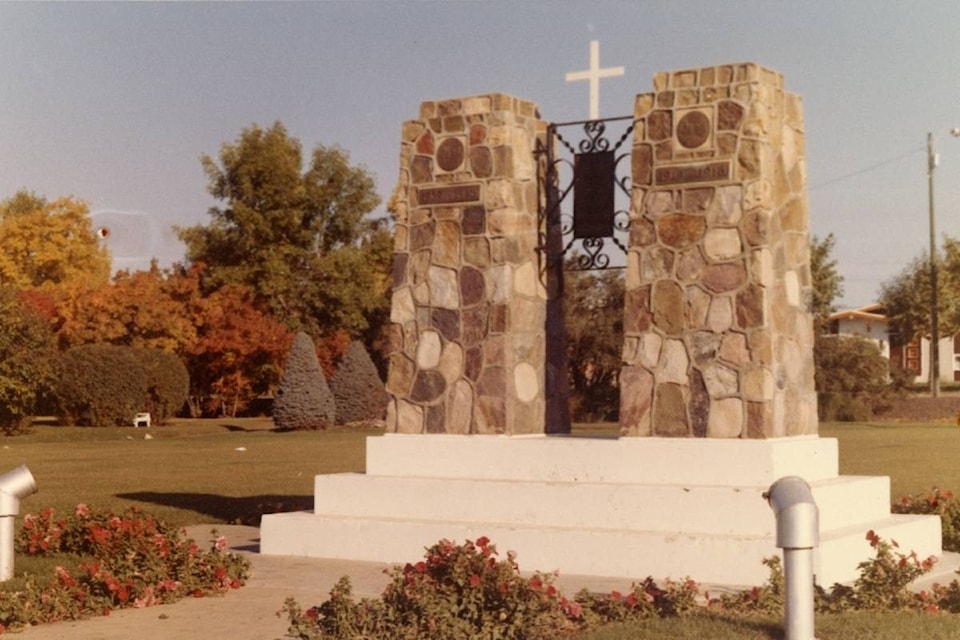This question has been at the centre of many of my recent conversations. It began with a gathering at Jubilee Park. What caught my attention was a banner hung across Wetaskiwin’s cenotaph. While I did not think any disrespect was intended, I did question its appropriateness. Richard Godin, a veteran and colleague of mine, disagreed, stating:
“All members of our Canadian Armed Forces, serving and retired, wore their uniform and served their country to ensure that all Canadians had the right to exercise their right to free speech and the right to gather to promote their views regardless of race, creed, gender, or political affiliation. The fact that these persons used the cenotaph to express those views should not be construed as an insult or injury to all our veterans, but should be viewed as a positive affirmation of the service that all veterans gave that enabled all persons to assemble without fear of retribution or reprisal…. At the end of the day, I for one am glad that they used that area for their event because it justifies its existence and the service of all veterans, those who have passed, the living, and the future members.”
I also had the opportunity to talk to a member of the group who used the cenotaph and asked why they chose to do so as they did. Their reasoning included accessibility and the simple fact that they have been doing so for the past nine years. More importantly though, they felt the fact that it was already a memorial area fit well with their message of mental illness and that they were able to build upon what was already there. They also assured me no damage was done to the memorial, and they left the area cleaner than when they arrived.
While, I agree with both ideologies, for me there is a difference between an activity AT the cenotaph and ON the cenotaph. This stems from the symbolic importance I give to built heritage and the historical meaning and purpose of this type of memorial.
The word cenotaph comes from the Greek κενοτάφιον (kenotaphion), which literally means empty tomb. From as early as the 8th Century BCE, ancient Greek cenotaphs existed in the homeland of a person whose body was either lost or buried elsewhere. Similar practices are seen in multiple cultures throughout history. The best-known modern cenotaph was built in London in 1919. It is dedicated to ‘The Glorious Dead’. No names were inscribed on it so as to allow individuals to assign their own meaning to the memorial.
In Canada, the decision of the Imperial War Graves Commission in 1918 not to repatriate any of the bodies of the men who died on the front brought cenotaphs to the forefront of our memorial practices as well. They acted as a tomb in the home communities of soldiers whose bodies remained in Europe, providing for a place of contemplation, reflection, and remembrance of those who paid the ultimate price and for those they left behind.
Wetaskiwin’s first cenotaph was built in 1932. This memorial was replaced by the Royal Canadian Legion Branch no. 86 in conjunction with the City of Wetaskiwin. Unveiled on September 14, 1955, it was dedicated to those who made the supreme sacrifice in both World Wars and Korea. It was designed by Bob Angus and consists of two stone cairns, representing the two World Wars. The design may also pay homage to an ancient Greek practice. Prior to leaving for battle, soldiers would place a stone in a pile and then retrieve that stone when they returned; the stones remaining symbolized those who did not come back.
For me, cenotaphs (such as the one in Jubilee Park) and war monuments (including the Wetaskiwin Field of Hounour Cairn in the new cemetery) are two different things. While both are memorials, the first is the tomb of those who never came home, the second honours all those who served. And so, what I saw in that gathering at Jubilee Park was two empty tombs being used as banner poles.
After all my conversations, I am struggling now with what the purpose of a war memorial is. To my knowledge, there are eight in our community of Wetaskiwin City, County, and Maskwacis. The two mentioned above, a cairn and cross at Ma-Me-O beach, cenotaphs dedicated to fallen soldiers at Mulhurst Bay, Millet, Thorsby, and Winfield, and the most recent at Maskwacis, a monument to all who served. Do all these memorials have to mean the same thing that they meant when first erected, or for each person? Can, or should, their meaning change so that they have a greater significance for current and future generations?
What do you think?
PHOTO CREDITS: Black and white photo: First Cenotaph Dedication, 1932 (with Gov. Gen. Bessborough) - Photo courtesy of the City of Wetaskiwin Archives, no. 10949, colour photo: Second Cenotaph Monument in Jubilee Park, c.1963. Photo courtesy of the City of Wetaskiwin Archives no. 18108.
Dr. Karen Aberle is the Executive Director & Chief Curator at the Wetaskiwin & District Heritage Museum and writes a regular column for the Pipestone Flyer. She can be reached at wdhm@persona.ca.
